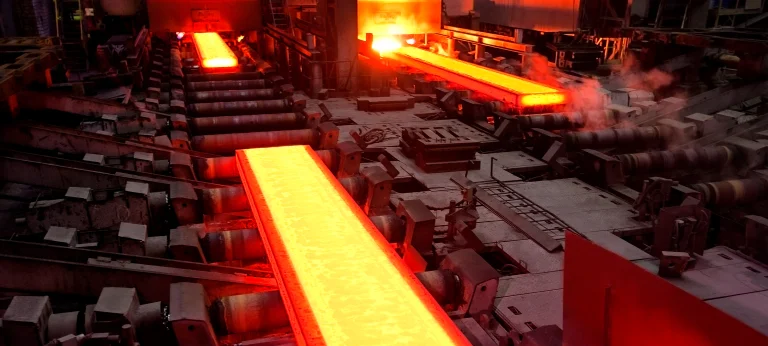(3 minutes read)
Namibia’s Oshivela project which is scheduled to commence in late 2024, is being initiated by HyIron with support from the German Federal Ministry of Economics and Climate Protection. This is one of the first industrial production of iron with net-zero emissions, based on HyIron technology, with an initial investment of N$600 million.
Namibia’s Oshivela project which is scheduled to commence in late 2024, is being initiated by HyIron with support from the German Federal Ministry of Economics and Climate Protection. This is one of the first industrial production of iron with net-zero emissions, based on HyIron technology, with an initial investment of N$600 million. Steel production using coal accounts for around 8% of global greenhouse gas emissions.
Green steel is the manufacturing of steel without the use of fossil fuels. So-called “green hydrogen” is one solution that could help reduce the steel industry’s carbon footprint. When burned, hydrogen emits only water. And if that hydrogen is produced via electrolysis using just water and renewable electricity, then it is completely free of CO₂ emissions. Hydrogen can also be low carbon if produced using fossil fuels and carbon capture, utilization, and storage (CCUS) technologies. This is known as “blue hydrogen”.
Read Also:
https://trendsnafrica.com/egypt-china-handhold-for-production-of-steel-for-exports/
The Oshivela project aims to achieve an annual output of 15,000 tonnes of Direct Reduced Iron (DRI) in its initial phase, generating approximately 60 employment opportunities. The ground-breaking ceremony for the project, facilitated by the Namibia Investment Promotion Development Board (NIPDB), is scheduled for November 6th, 2023, in Arandis. Renewable energy will replace fossil fuels in the conventional production process, powered by a solar and wind energy plant.
In the initial phase, a 20 MW solar photovoltaic installation will provide carbon-free electricity to the plant. As production scales up, an additional 18 MW of wind energy and 140 MW of solar energy will be integrated. This power plant will primarily supply energy for water electrolysis to produce hydrogen, the reduction agent. The hydrogen will then be transported to the furnace, where it will react with the iron ore’s oxygen at ambient pressure, ultimately forming water. This water will be reused within the process.
Once operational, the Oshivela project is anticipated to become one of the largest primary green iron production sites globally. At this stage, it is projected to reduce annual CO₂ emissions by 27,000 metric tons, equivalent to 50% of Namibia’s power industry emissions, as per the developers’ estimates. It is projected as an annual production potential of 1 million tonnes of iron, and is forecasted to mitigate 1.8 million tonnes of CO₂e/year. If applied to the necessary additional production capacities of 300 million tonnes by 2030, this could result in a yearly reduction of 540 million tonnes of CO₂e, making a substantial contribution to the fight against climate change.
According to the developers, the project is poised to address the growing global demand for iron, which is projected to rise from the current 1.9 billion tonnes annually to 2.2 billion tonnes by 2030, necessitating an increase in production capacities by 50 million tonnes each year.
Read Also:
https://trendsnafrica.com/walia-steel-urges-ethiopian-government-to-solve-forex-shortage/
Green steel is the manufacturing of steel without the use of fossil fuels. So-called “green hydrogen” is one solution that could help reduce the steel industry’s carbon footprint. When burned, hydrogen emits only water. And if that hydrogen is produced via electrolysis using just water and renewable electricity, then it is entirely free of CO₂ emissions. Hydrogen can also be low carbon if produced using fossil fuels and carbon capture, utilization, and storage (CCUS) technologies. This is known as “blue hydrogen”.
Electric arc furnaces are another option. These furnaces are gradually replacing traditional ones, but they are not always powered by renewable sources, and therefore the steel they produce may not always be green.
Read Also:
https://trendsnafrica.com/saldanhas-steel-operations-of-arcelormittal-south-africa-is-winding-up/
A metal-making company in Sweden has produced the first fossil fuel-free steel in a trial process. SSAB made the metal for the Volvo Group to use for truck manufacturing, a trial run before full commercial production in 2026. Hydrogen is a key part of the EU’s plan to reach net zero greenhouse gas emissions by 2050.





